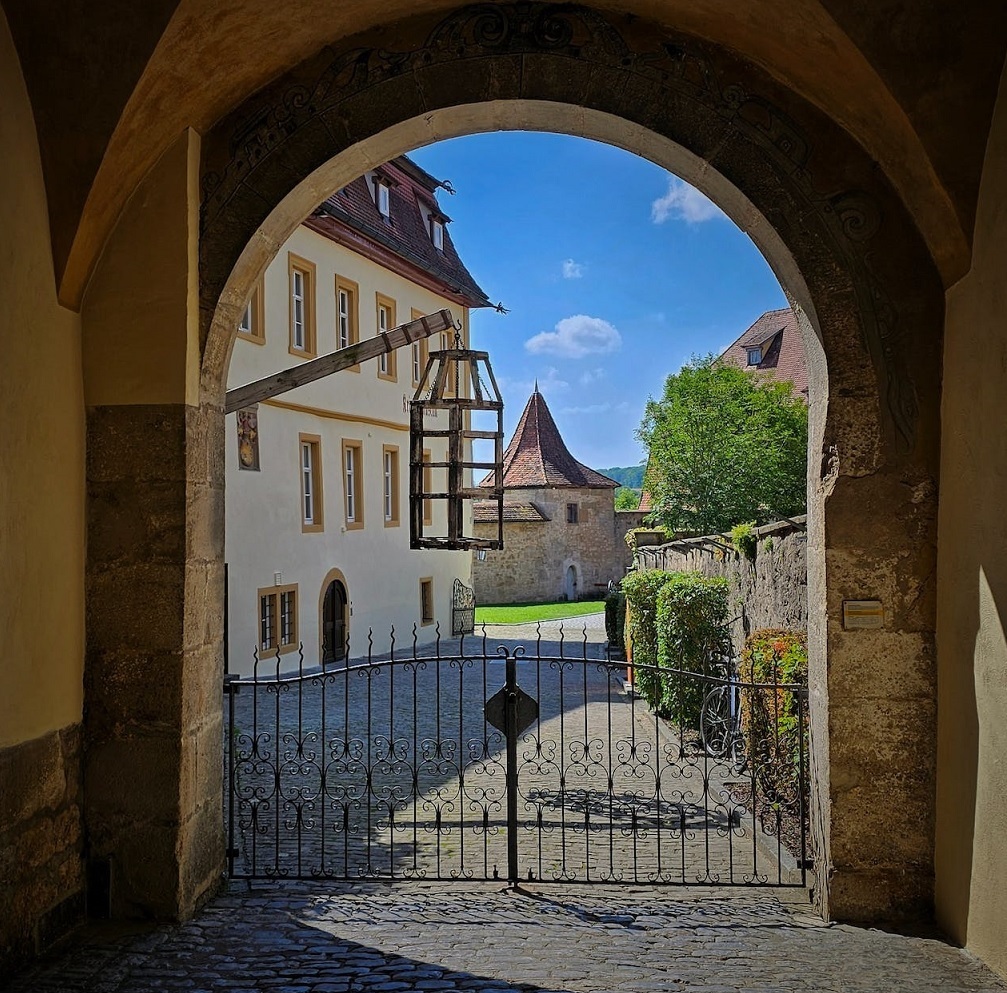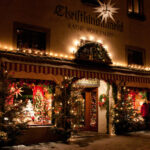
The Medieval Crime Museum (Mittelalterliches Kriminalmuseum) in Rothenburg ob der Tauber is a gateway to the arcane world of medieval justice. Nestled within the well-preserved walls of this iconic Bavarian town, the museum offers a deep dive into the legal systems, penal codes, and social norms that governed Europe during the Middle Ages. This comprehensive guide will unveil the museum’s chilling yet captivating collections, highlight the rich historical tapestry of Rothenburg, and offer practical tips for making the most of your visit to this unique institution.
The Town of Rothenburg ob der Tauber: A Historical Prelude
Before delving into the museum’s treasures, understanding the historical context of its location is crucial. Rothenburg ob der Tauber is a picturesque town on the Romantic Road in Bavaria, Germany. Renowned for its well-preserved medieval architecture, it provides the perfect backdrop for a museum dedicated to the period’s legal history. The town’s ramparts, towers, and cobblestone streets transport visitors back to an era when the rules of law were as complex as they were brutal.
The Medieval Crime Museum: A Portal to the Past
Established in 1977, the Medieval Crime Museum has become one of Rothenburg’s most visited sites, attracting history enthusiasts, legal scholars, and tourists from around the world. Housed in a building dating back over 600 years, the museum’s exhibits span two floors and cover over 1,000 years of legal history, focusing primarily on the period between the 11th and the 19th centuries.
The Collection: Unveiling Medieval Justice
The museum boasts an extensive collection of artifacts that paint a vivid picture of medieval law enforcement, trial procedures, and punishments. Highlights include:
Torture Devices and Instruments of Punishment
Visitors can explore an array of grim instruments such as iron maidens, thumb screws, and the infamous Schandmasken (shame masks) used to publicly humiliate offenders. These exhibits starkly remind us of the brutal methods of coercion and punishment that were commonplace in medieval justice systems.
Legal Manuscripts and Documents
Rare manuscripts and documents detail the evolution of legal principles and practices. These artifacts provide insight into how laws were recorded, interpreted, and applied during the medieval period.
Witch Trials and Superstition
A section dedicated to the witch hunts that swept across Europe between the 15th and 17th centuries includes trial records, accounts of torture, and chilling examples of the “proofs” used to condemn alleged witches.
Crime and Society
Exhibits also explore the social aspects of crime, addressing questions of morality, social order, and the interplay between religion and law. It reveals how societal norms influenced what was considered criminal behavior.
Punishment and Correction
The museum does not shy away from the harsh realities of medieval punishment. Gallows, pillories, and executioner swords are on display, along with explanations of their use and the crimes that warranted such severe sentences.
Law Enforcement
Learn about the emergence of organized law enforcement, from the appointment of the first public executioners to the development of police forces and the role of the citizenry in upholding the law.
Engaging Exhibits and Educational Programs
The museum’s approach to storytelling is immersive, engaging visitors with lifelike scenes and interactive displays. Educational programs are designed to cater to all ages, with special tours for school groups that align with curriculum standards.
The Importance of the Medieval Crime Museum
The value of the Medieval Crime Museum lies in its ability to educate and provoke thought about the progression of legal systems and the nature of justice. It offers a tangible connection to the past, prompting reflection on how far we have come and how justice systems continue to evolve.
Visitor Information: Planning Your Visit
To fully experience the Medieval Crime Museum, visitors should allocate at least two hours for their exploration. The museum is open year-round, with varying seasonal hours. Audio guides are available in multiple languages, providing a comprehensive overview of the exhibits for international guests.
Admission Fees and Accessibility
The museum charges an admission fee, with discounts available for students, seniors, and groups. It is partially accessible to visitors with disabilities, although some areas may be challenging to navigate due to the building’s historic architecture.
Getting to Rothenburg ob der Tauber
Rothenburg is accessible by train, car, and bus from major German cities. Once in town, the museum is a short walk from the central market square.
Accommodations and Dining
Rothenburg offers a range of accommodations, from cozy guesthouses to luxury hotels. Traditional Franconian cuisine can be enjoyed at local restaurants, many within walking distance of the museum.
The Experience: What Visitors Can Expect
A trip to the Medieval Crime Museum is not just about viewing artifacts; it’s an immersive journey into the past. The eerie silence that accompanies the clinking of chains in the torture exhibit or the solemn atmosphere of the justice hall allows visitors to feel the weight of history around them.
Beyond the Museum: Exploring Rothenburg
Visiting the Medieval Crime Museum offers the perfect starting point for exploring the rest of Rothenburg. The town’s medieval fortifications, including its gates and watchtowers, provide panoramic views and photographic opportunities. The Plönlein, a small square with a photogenic half-timbered house, is one of the most iconic sights.
The Medieval Crime Museum in Rothenburg ob der Tauber serves as a mirror reflecting the harsh realities of our past. It allows us to see the evolution of justice and appreciate the complexities of medieval society. This museum is not just a collection of artifacts; it’s a lesson in history, an examination of human nature, and a tribute to our continuous pursuit of justice.
FAQ Section
Q: Is photography allowed in the Medieval Crime Museum? A: Photography is typically allowed for personal use, but flash photography and tripods may be prohibited. Check with the museum for current policies.
Q: Can the Medieval Crime Museum be rented for private events? A: Yes, certain areas of the museum can be rented for private events. Contact the museum directly for more information and reservations.
Q: Does the museum offer any virtual tours or online resources? A: The Medieval Crime Museum has an informative website and occasionally offers virtual tours and online resources, particularly useful for those who cannot visit in person.
Q: Is the Medieval Crime Museum suitable for children? A: While the museum is educational and informative, some exhibits, particularly those involving torture devices, may not be suitable for young children. Discretion is advised for parents.
The Medieval Crime Museum in Rothenburg ob der Tauber offers a profound perspective on the evolution of justice and punishment. It’s a reminder of our history and an insightful look at the societal values that shaped the legal landscapes of the past. Whether you are a history buff, a legal professional, or a curious traveler, this museum offers a unique and thought-provoking experience that should not be missed when visiting this charming Bavarian town.
Related articles:
The Imperial City Museum in Rothenburg
Toppler Castle
20 Things to Do in Rothenburg ob der Tauber
The Night Watchman Tour in Rothenburg
German Christmas Museum







